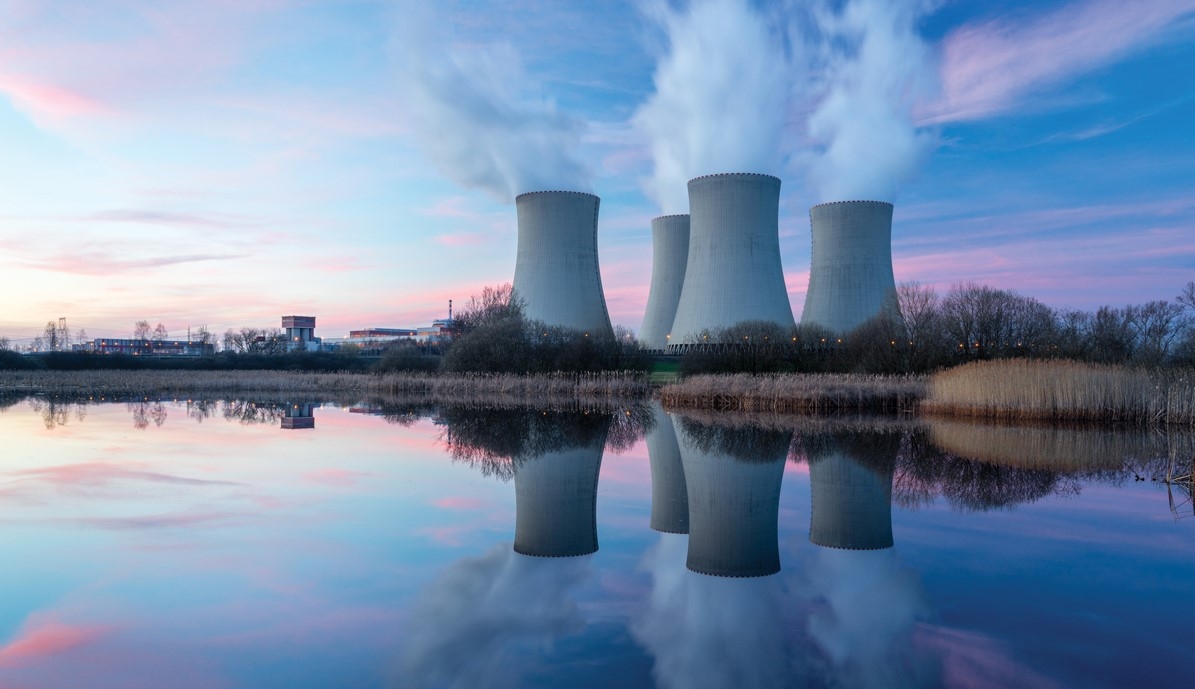
Canadian Nuclear Power: different from the others
Most of the public discussion and debate in Canada on the subject of nuclear power generation contributes little to our understanding. The two sides rarely engage in real interaction, and most published discourse is flaccid, incoherent and largely fact-free.
On the one hand, while most of the public utterances from experts in the nuclear industry are accurate, they are also vague, lacking in detail and specifics, and often condescending. Yes, we do understand that replacing carbon combustion with nuclear power reduces CO2 emissions, but talking down to the public on all the other issues and hugely underestimating the ability of the public to understand and evaluate real scientific concepts is not an effective method of debate or persuasion.
On the other hand, many opponents of nuclear power are consumed by paroxysms of fear over the mere mention of the word “nuclear”, preventing almost all real discussion, and harmfully splitting the environmental movement into two camps – those who see a role for nuclear power in reducing carbon combustion and its pollution, and those who don’t.
Furthermore, even having context to understand this non-debate is not easy, because we are exposed incessantly to opinion and information on nuclear power from “everywhere else”, meaning anywhere but Canada. Consequently, only a minority of Canadians are aware that the Canadian approach to nuclear power generation (the CANDU power reactor system) is surprisingly different from that used by the rest of the world, and that these differences have conferred some extraordinary advantages.
But before diving into those complexities, the whole discussion needs some kind of a frame. I have a physics background, and I am comfortable with the Canadian approach to nuclear power generation, but at the same time I appreciate that those who worry about nuclear power basically have four concerns, all of which need to be addressed. Those four concerns are:
(a) fear of exposure to dangerous ionizing radiation in the vicinity of the generating plants,
(b) fear of catastrophic accidents at such plants,
(c) concerns about export of the technology for such plants facilitating the proliferation of nuclear weapons technology, and
(d) concerns about the disposal/storage of spent reactor fuel.
I shall try to address each of these in turn.
Radiation Levels near CANDU power generating stations:
If one were to go and lean against the fence of a CANDU plant, the level of radiation there would indeed be a bit above background. But by how much? The best way to illustrate that is by a comparison. Humans are a bit radioactive, with almost all of it due to the potassium in our bodies. We have rather a lot of potassium in our bodies, as it is important in biology. An average adult would have about 150 g of potassium. Almost all of it is Potassium 39 or Potassium 41, but something more than a hundredth of a percent of it is Potassium 40, a naturally occurring radioactive isotope of potassium with a very long half-life (about 1.2 billion years). So if you sleep next to your spouse, you will be exposed to a substantially greater increase in radiation above the natural background level than you would if you spent the same amount of time leaning against that generating station fence. And while we do hear scary stories from time to time about sleeping next to someone, most of the risks seem to be centered upon snoring and stealing the covers. Nothing about Potassium 40.
Risk of Catastrophic Accidents:
It is always possible to have an accident. That being said, CANDU nuclear power generating stations have been generating electrical power since the first one, a prototype plant known as NPD (for Nuclear Power Demonstration) at Rolphton, Ontario, went on line in 1962. In that 59 years, there has not been any event or incident which could be described as an accident. NPD itself operated until 1987. There have been the usual expected occasional malfunctions, but they were addressed in the ways anticipated. There are good reasons why CANDU plants are much less likely than others to have significant accidents, and they will be outlined below.
On the other hand, there have been two non-trivial nuclear reactor accidents in Canada in research reactors. At Chalk River, Canada’s first research reactor, known as NRX, which began functioning as a neutron source in 1947, and at the time was the most advanced in the world, had a serious accident in 1952 which caused an ignition of highly flammable hydrogen gas, which exploded. The cleanup took two years, and involved over 1200 people in the cleanup. One cleanup crew leader was Jimmy Carter, later president of the United States. That reactor then went on to operate until 1993. Canada’s second research reactor, and our primary source of medical radioisotopes for decades, was NRU, also at Chalk River. It had a less serious accident in 1958, but went on to provide a neutron stream for research, and radioisotopes for hospitals until 2018. Extensive dosimetry associated with these two accidents and their cleanup has led medical scientists to conclude that the radiation exposures experienced by those doing the cleanup were so low that, statistically, it is unlikely that the radiation exposure above background caused even a single serious illness. But a huge amount was learned about reactor and fuel rod design from these experimental reactors. These lessons were incorporated into the currently active full-scale CANDU power generating plants.
What makes these reactors so different from those of all other countries? To answer that requires a brief reprise of some nuclear science. The fissile material that is used as the fuel for power reactors is uranium-235. Uranium exists in nature, but it consists mostly of uranium 238, which does not give off neutrons. Only a small percentage of the uranium, about 0.71% is U-235. That rare isotope is radioactive, with each atom that decays sending off two neutrons. If such a free neutron is captured by another U-235 nucleus, it too can split, producing two more neutrons in turn. This is called a chain reaction. However, in nature, a neutron from a U-235 atom decomposing is travelling too fast to be captured easily by another U-235 nucleus, so to build a reactor that can sustain a chain reaction and produce heat, the core must be suffused with a material to slow the neutrons down. Such material is called a moderator. Three materials have been commonly used for this purpose, being ordinary water (known as light water), graphite (carbon), and heavy water. Heavy water is H2O where the hydrogen atoms each have a neutron as well as a proton. This double mass hydrogen is called deuterium. Heavy water is completely stable and exists in nature, in that one in every 5000 water molecules contains a deuterium.
Heavy water is vastly better as a moderator than either light water or carbon, but is damned expensive to purify. The US decided to base its power reactor programs upon using light water as a moderator, largely because it is an outgrowth of the US nuclear submarine technology. Most of the world now uses light water as the moderator, though some plants have used carbon. Only Canada uses the expensive heavy water. But the heavy water is so much better in terms of neutron economy that the Canadian reactors can burn uranium in its natural, unenriched form, containing only 0.71% U-235. All the others need to enrich their fuel to somewhere between 2.5-5% U-235. This means that Canadian reactor fuel is much less energy dense than that of other nation’s reactors. And it also means that we have had no need up to this point to engage in uranium enrichment (more on that later).
So CANDU reactors use unenriched fuel, with heavy water as a moderator, and have neutron-absorbing control rods inserted into reactor cores from above, with the rods held in place by electromagnets, so should there be an electrical power failure, for example, the electromagnets release, and the neutron-absorbing rods fall downward into the core, shutting down the reaction. A CANDU reactor shuts down in somewhat under one second if it detects a problem. A malfunction that would raise temperatures to problematic levels, with the fuel currently being used, would need more than two seconds to produce problematic temperatures. This is not always the case with the reactors of other nations. Furthermore, Canada has put a huge effort into the development of accident tolerant nuclear fuel.
It is useful to reprise some of the facts behind the world’s most notorious and catastrophic nuclear power generating accidents. Chernobyl (1986) was a carbon pile reactor, meaning that carbon was the moderator. Leaving the series of bad decisions leading up to the accident aside, a huge factor in the horrific damage caused was that the overheat caused the moderator to catch fire and burn like a huge fire in a coal mine, or like an oil well fire. This open-air reactor core fire burned for 9 days, releasing considerable airborne radioactive material. Clearly, having a flammable moderator in a reactor that cannot be passively cooled is not a good idea. The UN Scientific Committee on the Effects of Atomic Radiation had concluded that this accident caused something under 100 deaths, but some models suggest that the long-term death toll from residual contamination might actually be 4-16,000.
The other notorious nuclear power generating accident was Fukushima Daiichi (2011). This was a light water moderated enriched uranium reactor designed by General Electric, and built in 1971. It was a design so peculiar that it is amazing that anyone would have undertaken to build it. In addition to a plethora of other design problems, the control rods for the reactor core were inserted from below by pistons driven by compressed air, with that compressed air provided by electrically driven compressors. With any loss of electrical power, the control rods would begin to back out of the core, increasing the chain reaction in the core.
This was already known, as such an incident had occurred once during a refueling. Furthermore, the emergency electric generators for the plant were in the basement. When the tsunami struck, flooding the basement, all electric power was lost, and the chain reaction, far from being shut down, was accelerated by the gradual withdrawal of the control rods. Imagine, if you will, an automobile designed so that the accelerator is always flat to the floor unless the driver constantly pulls on a lever to reduce the throttle. That was, effectively, the design of the reactor system at Fukushima Daiichi. Not a good idea for a car, and not a good idea for a nuclear reactor. The dreadful result is known to all.
The design ideas behind the Canadian approach to nuclear power consciously sidestepped all the issues that have been implicated in accidents in dissimilar systems abroad. It would be a serious mistake to lump all the technologies together in a single assessment.
Concerns about Proliferation of Nuclear Weapons:
For the first half century of nuclear power, it could be argued that the Canadian approach to nuclear power generation, using unenriched uranium, was a bulwark against nuclear weapons proliferation, because a uranium fission nuclear explosive device needs uranium enriched to greater than 90% U-235. Other power generating systems exported by other nations, including the US, using light water as the moderator required enrichment of the fuel to 2.5-5% U-235, so that exporting such technologies meant providing for uranium enrichment as well. To be fair, enriching to 5% U-235 is a rather different task than enriching to greater than 90%, but the proliferation of enrichment technology and capacity was then appropriately considered a weapons proliferation risk.
This anti-proliferation advantage of the CANDU system is less important now than it once was. That is because, as far as enrichment is concerned, the horse is already out of the barn. First, the world now has a surplus of enrichment capacity rather than a dearth, with perhaps 50% more enrichment capacity than is needed. Secondly, the technology for carrying out uranium enrichment has gotten easier and cheaper with the passage of time. The earliest method for it, using gaseous diffusion, was long, complex and hugely energy-hungry. It was in turn supplanted by a method that employs gas centrifuges, a technique well-publicised in all the journalism surrounding the Iran nuclear agreement. The gas centrifuge technique, while using substantially less energy than its predecessor, is still rather energy hungry. But now a new technique using tuned lasers to selective pick U-235 out of the U-238 has reached a state of development that it seems ready for industrial scale use. It is much less energy-hungry, and implies that controlling nuclear proliferation through controlling enrichment is going to be vastly more difficult, if not impossible. There are, of course, other technological choke-points for the development of nuclear weapons, but, increasingly, anti-proliferation efforts will need to be carried out by agreement and verification rather than denial of technology. Denying any nation states the knowledge of the technology for nuclear power generation today does very little to prevent them from developing nuclear weapons if they are so inclined. In some cases, however, where no indigenous source of fissile material exists, denying the raw materials can be effective.
Concerns about the disposal or storage of spent reactor fuel:
Canadians may not realize that the great bulk of radioactive waste created in Canada is waste from hospitals. This material is much less radioactive than spent reactor fuel rods, but it really is garbage. This medical waste does go into specialized land fills.
On the other hand, spent fuel rods from reactors are not garbage, but are enormously valuable. They may be the most valuable “waste product” in history. Plans for how to store the fuel rods from Canadian power reactors have been the subject of much public attention over the years. The ideal seems to be to store them, imbedded in glass, in storage facilities in a tunnel in a rocky pluton somewhere in the Canadian shield.
But some portions of the public still seem to have a mental image of leaky metal drums rusting away in some abandoned disposal site for thousands of years, contaminating the ground water. Nothing could be further from the truth. No reasonable person would wish to put such spent rods beyond human reach, because we will almost certainly need them back within decades. Why is that? Well, for a start, those rods still contain about two thirds of the U-235 that they started with when they were fresh. Today it is still somewhat cheaper to go and mine new uranium to get material that contains the naturally occurring 0.71% of U-235. But at some point, the equation will shift, and the 0.45% or more of U-235 that is still in the so-called spent rods will be extracted and re-concentrated so that it too can be burned. No-one ought to wish to put something so useful beyond our reach. And there are other useful isotopes in them as well. So do we have confidence that we can maintain a tunnel in rock for some decades? Well, we have railway tunnels and mine tunnels that have been maintained for well over a century that are still perfectly serviceable. Establishing a specification and a maintenance standard for such a storage facility is actually very straightforward. And, in due course the “spent” material will be reprocessed, which is an opportunity to reduce the volume we need to store.
Canadians get the idea of recycling. We recycle plastic, metal, glass, paper, and a host of other things, and we have developed a bit of a habit of shaming those who don’t recycle. Well, we should similarly expect to recycle reactor fuel as well.
What comes next?
The Government of Canada and some provinces have, of late, expressed an interest in the development of Small Modular Reactors (SMR’s). Their notion is that these could be used in off-the grid settings like remote communities, where power is now supplied by burning diesel fuel in generators. Such SMR’s could also be used in off-the-grid industrial applications, or added to the grid where needed to replace outdated CO2 emitting plants. How small is small? They vary, but some are so small that major assemblies like the reactor vessel can be moved by road.
There are many designs contemplated, and some nine designs are at various stages of review or approval by the Canadian regulator, with three being quite far along in that process. The designs vary as to the coolant, fuel and moderator, but all seem to have two key features in common. First, they would all would be capable of cooling down passively on shutdown, obviating risks associated with electric power loss, so all are inherently incapable of a meltdown type of failure. Secondly, they would all have a sealed core which would either remain for the lifetime of the unit or be replaced in its entirety at long intervals, obviating any mechanical refueling issues.
In these features, they have some passing similarities to the last operating federal research reactor, which is the Slowpoke research reactor located at RMC in Kingston. I am very familiar with that reactor, as I was principal of that university from 1999-2008. The RMC Slowpoke was put into operation as a neutron source in the mid-1980’s, has been operated ever since, and is due for it’s first refueling in 2021. As a source of neutrons, its main use has been to carry out neutron activation analysis of chemical samples, as part of a huge environmental research program aimed at detecting and remediating chemical pollution. Its various features make it so safe that it is the only current reactor I know of that is licenced to run without an operator present.
It remains to be seen whether the small modular concept can fully realize the cost advantages of greatly reduced on-site construction, and standardized components mass produced centrally. It now seems likely that at least two Canadian demonstration projects will be completed during this decade, so that an evaluation can be made.
The future of nuclear power generation in Canada is uncertain. Clearly, amongst the other green technologies it has some obvious advantages, such as constancy. It is not dependent upon weather or time of day. But other technologies are also improving. The recent advances in photovoltaics are impressive. Furthermore, nuclear power must also be viewed as a transitional technology, since the supply of fuel is not infinite, though it is certainly sufficient for a few centuries.
But assuming, as some folks do, that all nuclear power generation is inherently too dangerous to be contemplated is rather like assuming that all dogs are dangerous or that all sports are dangerous. Fortunately, we know enough about dogs and sports to separate pit bulls from poodles and football from ping pong. Learning a bit about Canadian nuclear technology should give us the ability to discriminate in that area as well. Then we can ascertain rationally what fraction of our power we want to get from that source.
Photo: iStock









